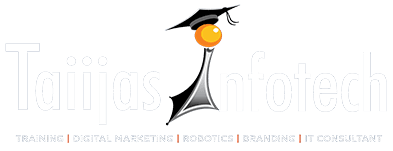Learn how to create full-featured iPhone apps from scratch, a hands-on training course taught by iPhone experts.
Learn how to use the major tools and APIs in the iPhone SDK 3.0, and how they all fit together to build mobile apps like the pros.
Gain hands-on coding experience and get answers to your questions so you can start creating your own iPhone apps with confidence..
Get a jump start on programming the iPad (once it’s officially available).
Save time and frustration by focusing exclusively on iPhone development with expert guidance.
You’ll come away from this course knowing Interface Builder, Xcode, Objective-C, Cocoa Touch programming, and the APIs included in the iPhone SDK 3.0. You’ll not just know how to use these powerful tools, you’ll also understand why things are the way they are. You’ll be ready to create your first iPhone app, or improve your existing app.
Our Keen Work criteria consist:
How to create full-featured iPhone apps from scratch.
Through a series of guided instruction, hands-on coding exercises, and discussion, you’ll learn the fundamentals of creating iPhone apps that look and function like some of the apps already on your iPhone.
Topics include:
Intro to Objective-C: Objective-C is the object-oriented programming language that you use to write iPhone apps. While this isn’t a comprehensive course on Objective-C, you’ll learn enough to jump right into iPhone development: classes, objects, properties, message sending, memory management, and the Foundation classes.
Xcode and Interface Builder: Xcode is the IDE used for iPhone development and Interface Builder is the visual tool for designing your app’s user interface. You’ll learn how to use both of them to work more efficiently.
Cocoa Touch: Cocoa Touch is a set of object-oriented libraries for creating apps that run on the iPhone and iPod Touch. Cocoa Touch is based on Cocoa, and embodies various object-oriented design patterns also used for programming on the Mac. Understanding those patterns is essential to becoming a competent iPhone developer. You’ll learn the benefits of model-view-controller (MVC), delegation, notifications, and other patterns in Cocoa Touch.
Views and Their Controllers: Views represent the user interface of your app, and all the dynamic aspects of a view are handled by a view controller. View controllers are the hub of the model-view-controller (MVC) design. You’ll learn how to design views and wire them up to view controllers with outlets and actions.
Navigation: Efficient and consistent navigation is especially important on a mobile device. You’ll learn how to use navigation and tab bar controllers to improve the user experience of your app.
Table Views: Table views are central to many iPhone apps, such as the contact manager. You’ll learn how to organize data in tables, insert and delete table data, and navigate between tables using navigation controllers.
Keyboard Input: The virtual keyboard is unique to the iPhone and it’s important that your app makes it as easy as possible to enter text. You’ll learn how to use delegates to design and handle keyboard input for an ideal user experience.
Touch Events: Take advantage of the touch screen by learning how to handle touch events and multi-touch gestures.
Core Data: Core Data is a new feature of the iPhone 3.0 OS that offers an elegant solution to data modeling and persistence. You’ll learn how to get started managing, modeling, and persisting app data using Core Data.
Custom Drawing: Graphics are an important element of your app’s user interface. Static images only take you so far. Set your app apart from the crowd by learning how to create custom views drawn with Core Graphics.
Core Animation: Add that extra “wow factor” to your app and give users visual feedback through rich animations by learning how to use basic animation layers and timing functions.
Photos: Personalize your app by learning how to access a user’s existing photos from your app.
Networking: Extend the reach of your app by learning how to communicate with external web services.
Performance and Debugging: Learn how to use power tools, including Instruments and the Clang Static Analyzer, to detect memory leaks and profile the performance of your app.
Transitioning to the iPad: The iPad SDK is officially available, we’ll begin teaching how to program it alongside what you learn about iPhone programming.
Learn practical tips, tricks, and techniques used by the experts to work efficiently and create full-featured iPhone apps.
In addition to the prepared topics, you’ll have time to ask questions and spark discussions with other iPhone developers.
Our Culture:
– Our Engineers having Experience of More than 50 Installation & Maintenance of various web applications.
– We have offered our Web Applications to More Than 15 Clients this year.
– Our Founder and their Team having More Than 50 web and mobile applications development Experience.
Course Details:
– iPhone SDK Course
Duration: 2 months (with one month practical sessions)
– iPhone SDK Intrduction Course
Duration: 1 day course
– Mobile web sites & application development
Duration: 1 months (with one week practical sessions)
Our Simple criteria for Training is Complete Customer Satisfaction by sincere, urgent, tire less efforts, With intelligent direction & Skill full Execution, our Engineers are cultured & technology equipped to make a project success.
Register with us to join any of our course batches.
